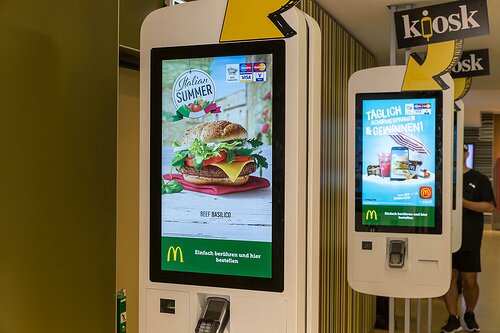Have you ever used a self-serve kiosk? Perhaps you checked out with your groceries to save time. Or you waved your RFID pass to roll on into the carwash without waiting in line to get change for a $10 bill. In either case, technology has enabled self-service, a fancy term for “you do the work.” No matter what you may call it, the term “shadow work” coined by Craig Lambert applies.
Shadow work is worked pushed from the business to the customer or the public, reducing their labor costs. This may be done entirely to save money, though grocery stores may tout the fact that bagging your own groceries and returning your own carts allows them to offer cheaper groceries. Toll tag systems advertise the incentives; get a toll tag so they can automatically track your passage through toll booths and even save them having to take pictures of your driver’s license and send you the bill, you could save 15%-30% on the total bill.
In other cases, they don’t bother offering you a discount but other benefits. Self-service websites that let you put in a ticket for computer repair and step you through the process of resetting your own password are common. Knowledge bases that let you search for an error message and try to step you through either the process of fixing it or tell you when you truly need to call the helpdesk is another form of this. I know, I used to work on an IT helpdesk and specifically looked for anything we could document to reduce user calls. That work significantly reduced our workload, whether it was making it clear who the customer needed to call or telling them, “Yes, call us or email us, but we need X, Y and Z information from you to serve you faster.” In that workplace, we didn’t reduce headcount, but we were able to expand the user base without adding people.
I find it interesting how often a programming language, development tool or other aspect of technology is promoted based on its active user community. The creators are proud of the fact that their customers/users are gathered online, providing free technical support and training they don’t need to provide. The company still needs developers to create the next generation of the product and handle the advanced questions, but first level and some second level tech support issues are shifted onto the customer or other, more knowledgeable customers.
Conversely, technology has enabled the same thing in marketing. Post pictures of yourself with a Coke online while letting the company know what you’re doing, and you may or may not win branded swag to wear… while still advertising the company. I’ve ghost-written numerous articles on how giveaways and coupon codes given to fans generate massive social media buzz and free advertising content for relatively little cost. Companies retain experts like a social media marketing guru or data analyst, but they need fewer lower level employees in the marketing department. Amazon utilizes a hybrid model demonstrated every time they send me a customer question to answer, since their records show I bought it a while ago. The business case for this is clear, since those contributing the images, information and assistance are doing so for free or nearly free. You know, those free coupons from Coke once in a while are starting to look better…
Shadow work is one of the ways businesses cope with higher wages and overhead costs like healthcare, parental leave and vacation mandates. Whether the restaurant puts in robots to try to flip burgers, ordering kiosks to replace cashiers, or switch to a buffet to reduce overall food service costs depends on the business.
In summary, a lot of work that can’t be done by robots will still be done by people, but they will increasingly not be paid for it. This is in part enabled by technology, but not always.
****
Check out Tamara Wilhite’s Amazon Author Page and see her on Hubpages.
Photo by marcoverch 



Comments